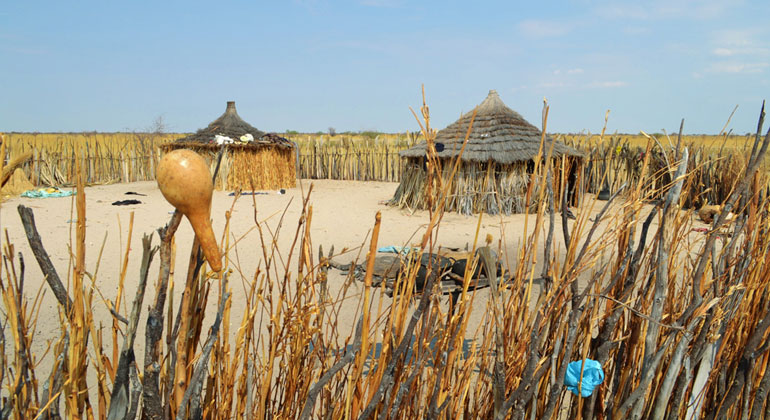Re-assessing droughts and their risks using Namibia and Angola as examples
Droughts threaten millions of people worldwide. Climate change is likely to exacerbate famines and water shortages and people in sub-Saharan Africa in particular are affected by the risk of more frequent droughts. So, scientific instruments to assess the extent of these drought risks are becoming increasingly important to take effective countermeasures.
For Namibia and Angola, ISOE researchers have now developed an instrument that covers not only conventional environmental parameters but also the social aspects of droughts. The authors Stefan Liehr and Robert Luetkemeier summarize the resulting proposals for integrated measures to reduce drought risks in the current ISOE Policy Brief.
Only a comprehensive strategy will serve to achieve the United Nation’s Sustainable Development Goals (SDG). A comprehensive strategy includes the development of appropriate measures for adaptation to and mitigation of droughts. For this it is important to know not only the ecological but also the social consequences of droughts. It is only through this holistic approach that the actual extent of drought risks becomes apparent and thus the vulnerability of humans and nature to environmental events. Medium and long-term strategies are needed to combat hunger, water scarcity and migration as a consequence of droughts. These strategies combine very different technical as well as institutional measures. As the example of the Cuvelai catchment area in the border region between Namibia and Angola shows, environmental events do not stop at national borders. So, this risk assessment also needs a transnational approach.
The ISOE Policy Brief No. 6 “Integrated responses to drought risks in Namibia and Angola” describes the requirements for such an integrated, transnational risk assessment. The authors Stefan Liehr and Robert Luetkemeier contribute their expertise from the international research project SASSCAL (Southern African Science Service Centre for Climate Change and Adaptive Land Management) by investigating water-related vulnerabilities and risks for the population and ecosystems in the Cuvelai catchment area. In this region, the majority of the rural population lives from agriculture and livestock farming and is therefore directly affected by droughts and their consequences. The data collected, inter alia with the help of household surveys, were spatially differentiated and analyzed in a model-based approach in order to identify areas with particularly high vulnerability and frequent droughts.
Multi-resource mix: potential for sustainable water use
The measures derived therefrom focus primarily on the sustainable use of available water resources. It is important that the potential of central water supply networks is efficiently linked to the advantages of decentralized water resources. ISOE already researched and tested this so-called “multi-resource mix” within the CuveWaters project. In northern Namibia, tap water is a central pillar of water security for a large part of the population. But the water available during the rainy season is also indispensable to cover domestic and agricultural water needs. It is therefore important to make rainwater available even in the dry season, for example through wells that are protected from contamination or artificial near-surface storage systems for rainwater and floodwater. This more efficient water use could thus also contribute to the promotion of agricultural development. By providing small farmers with sufficient water for arable and livestock farming, bottlenecks in food availability could be reduced.
In addition to these technological measures, social innovations are also indispensable to achieve water and food security. Above all, it is essential to support the residents in rural areas with regard to their community cohesion and mutual solidarity since neighborly and family support are important factors in emergencies such as droughts.
The authors of the ISOE-Policy Brief recommend that affected countries introduce a monitoring procedure that continuously monitors the most important parameters for drought risk. In addition to the observation of natural hazards (e.g. hydro-meteorological measurements), the social dimension of vulnerability should also be included in the monitoring.
- Luetkemeier, Robert/Stefan Liehr (2019): “Integrated responses to drought risk in Namibia and Angola” | ISOE Policy Brief, No. 6. ISOE – Institute for Social-Ecological Research (ed.). Frankfurt am Main, Germany Download








